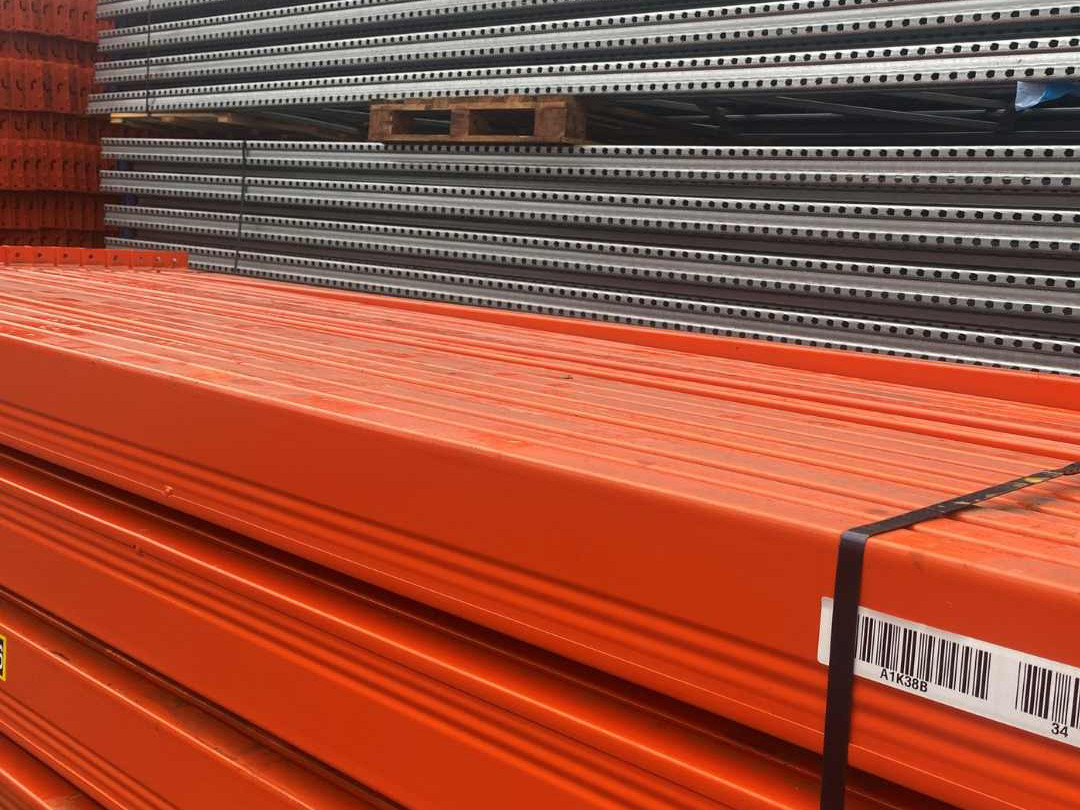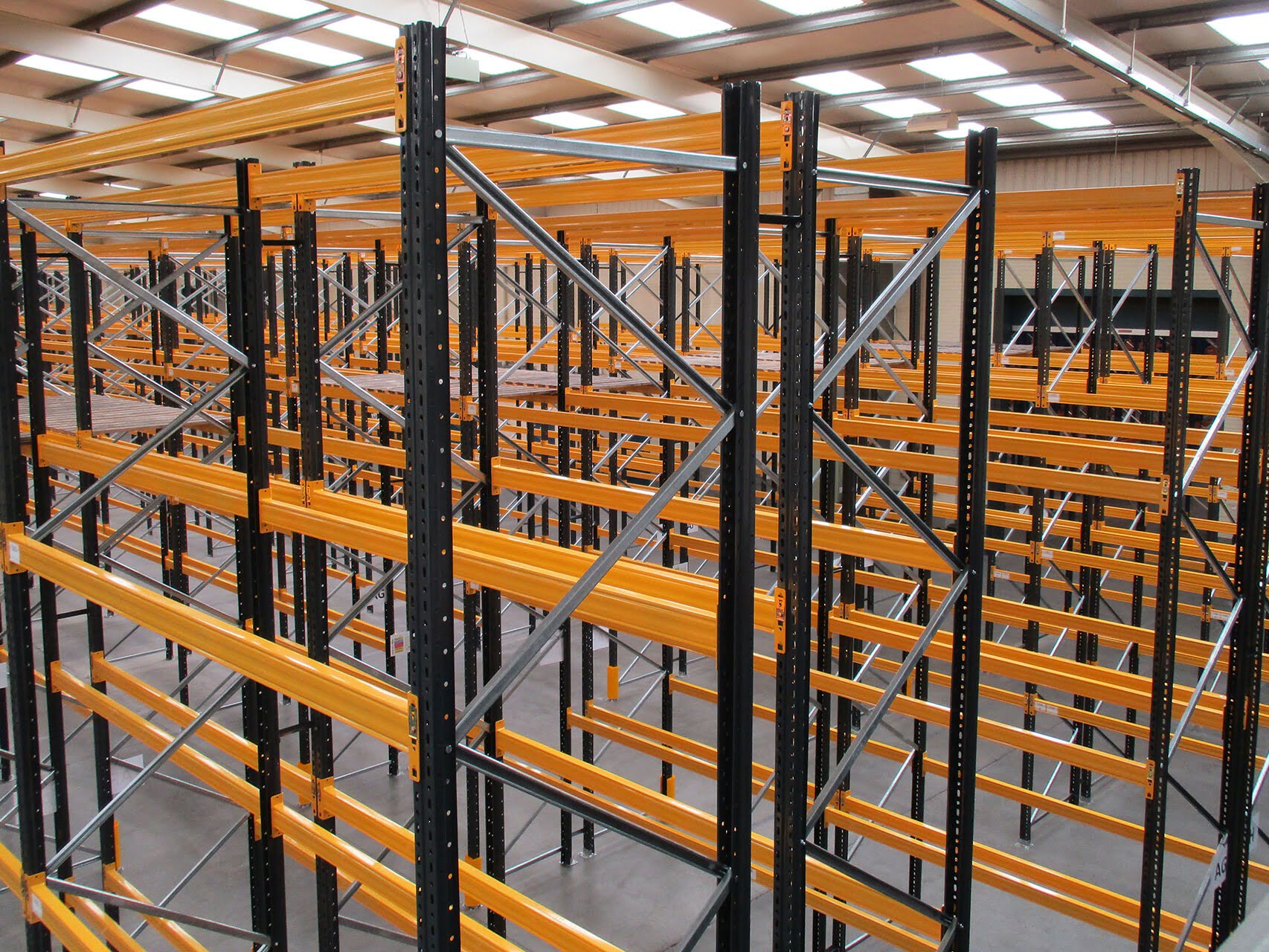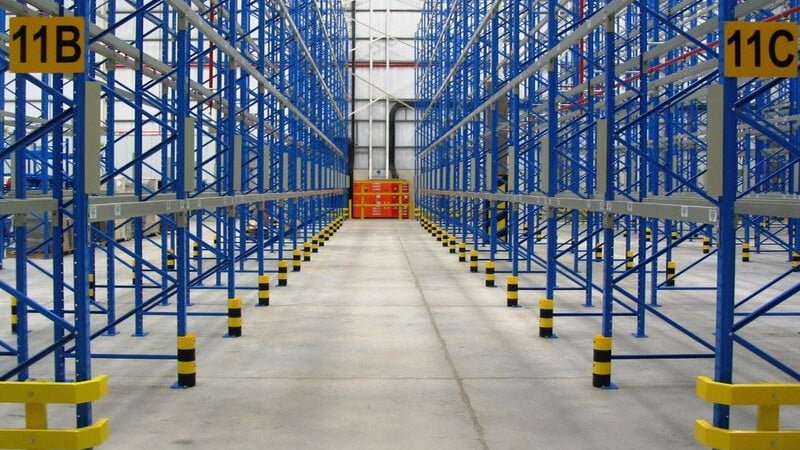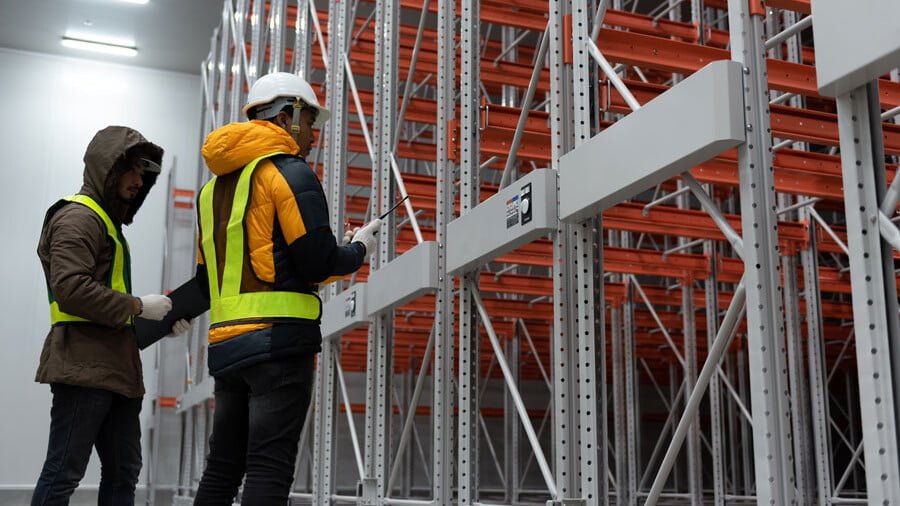| SecondHand Racking |
Pallet Racking Types
There are many types of pallet racking and selecting the right one can be integral in maximizing space, safety and efficiency.
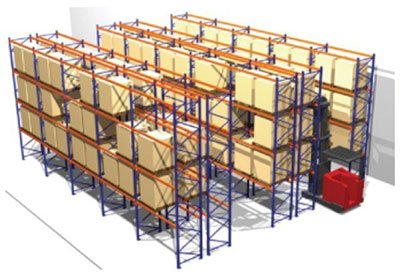
Pallet Racking
This is the most common and universal racking type and system for direct and single access to each pallet. It has a variety of sizes of beam lengths and frame depths making it perfect if your pallets are of unusual size. The great advantage is that you have total stock control: each storage space is taken up by a single pallet.
This system can be operated with a variety of forklift trucks on the market. In order to store a greater number of pallets, double-deep racks can be installed enabling one pallet to be stored in front of another on each side of the aisle.
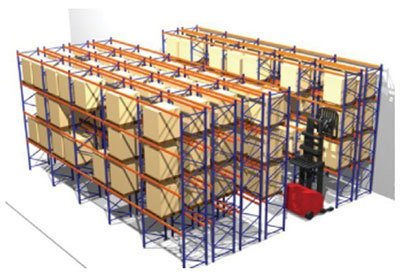
Double Deep
Similar to conventional pallet racking except you can increase the number of pallets stored. Similar to Drive-In racking this system is generally use when storing pallets of the same type and when stock rotation and pick faces are not a major concern.
The Double Deep system requires the use of a specialist truck with an attachment fitted. Also, the aisles having to be bigger than normal.

Narrow Aisle
When wanting to store a large number of pallets and still get the maximum pick face and stock rotation then this system offers them all.
If you are using a specialist VNA machine this requires a super flat floor and for the machine to operate within the aisle you need to fit guide rails, standard or low profile, or use a wire induction guidance system.
You would need a secondary truck like a counterbalance to load the vehicles which means fitting P&D stations to the racking is recommended.
There are two other trucks on the market called a “Flexi” or “Bendi” truck which is designed like a counterbalance truck but bends in the middle making it able to operate in narrow aisles. These do not need guide rail or guidance aid and can be operated outside which means on truck can do all.
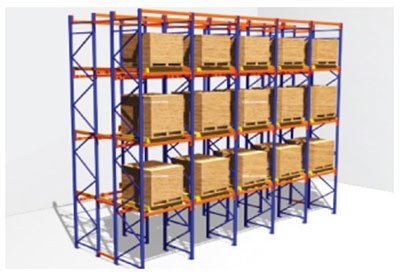
Push Back
This system allows six pallets deep to be stored per level. All of the pallets of each level, except the top one, are placed on a set of trolleys that are pushed along rolling rails. This means unlike drive in you can pick from any pick face and as you do not have to drive in the rack it makes picking and putting away quicker.
Push-back is an ideal racking type for storing medium-turnover products, using the Last In First Out (or LIFO) system.
This is a moving system, so beware that things can go wrong. Debris can get onto the roller track causing the trolleys to jam. If pallets are put away incorrectly then you can cause the trolley to twist and jam. This system needs to be maintained. Also, because this system is specialized and some forklift operators have not used it before we recommend that training be given.
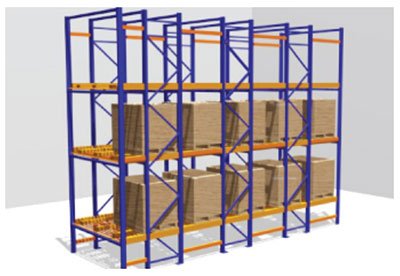
Live Storage
The roller track sections incorporated within the racking system are placed on a sloped lane to allow the pallets to slide over them down to the take-off position. The pallets are put in at the highest part of the rolling section and move by the force of gravity and at a controlled speed towards the other end.
The Live Storage system provides excellent volume utilization on First-In-First-Out (FIFO) principle. It’s ideal for creating loads ready to out. As soon as the first pallet is removed then it releases the pallets behind to roll down ready for take-off. This makes picking efficient and quick.
These racking types are not ideal for storing goods for over a length of time as the weight of the pallets embeds the wooden pallet on the rollers creating grooves in the wood, which means when the first pallet is taken off the pallets behind can get stuck.
This is a moving system, so beware that things can go wrong. Debris can get onto the roller track causing the rollers to jam. If pallets are put away and slammed down onto the rollers then this will damage them causing them to break. Some systems have a paddle mechanism at the front which separates the pallets behind from the first pallet at the front. If the first pallet is not taken off correctly then it will not release the pallets behind. The first instinct for the forklift operator to do is to place the pallet back to its take-off position to try again. Whilst doing this the operator can catch the paddle and bend it back breaking the mechanism. Once again this system needs to be maintained. Also, because this system is specialised and some forklift operators have not used it before we recommend that training be given.
Pallet Racking Services
Explore how companies in various industries are optimising storage, boosting efficiency, and streamlining operations with our heavy-duty new and used pallet racking.
Used Pallet Racking
We supply, deliver and install second hand / used racking & shelving at competitive prices.
Sell used pallet racking
We are constantly looking to replenish our stocks and will offer fair prices for your used pallet racking.
New Pallet Racking
We not only offer used racking but also frequently recommend and sell new pallet racking.
Pallet Racking Rental
Because having large sums of capital in warehouse racking does not always make sense.
Racking Safety
Useful Racking Tools
RACKING DESIGN TOOL
The online racking design tool allows you to plan how much racking you can get within a defined space.
QUOTE CHECKER
Send us the quotation of your preferred supplier we will check that the quote meets your requirements.
RACKING IDENTIFIER
Take a look at our guide which should help you to identify the storage system that you’re operating in your warehouse.
RACKING TYPES
There are many types of pallet racking and selecting the right one can be integral in maximizing space, safety and efficiency.
For an instant quote, or to speak to one of our experts, contact us today!
Fill out the form below, or call us on 0113 253 3304 and we will be in touch.
By clicking “Submit” you confirm having read and accepted the content of our Privacy Policy
